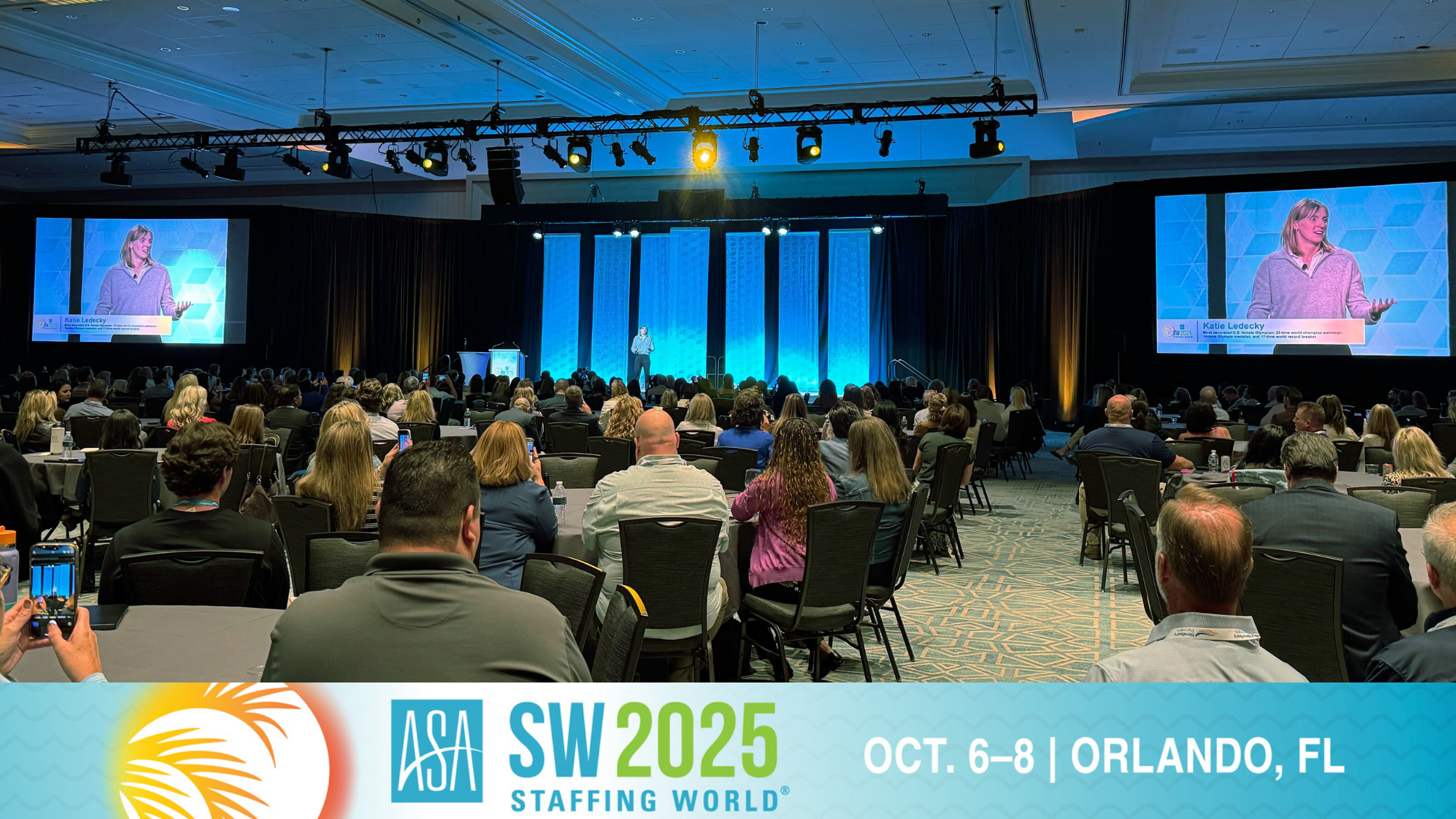“How’s the Staffing Industry doing, Barry?”
“Not great.” opened Timothy Landhuis, VP of Research, SIA, and Barry Asin, Chief Analyst, SIA. Together, they quickly framed the changing and challenging landscape everyone in Staffing knows so well. Despite the challenges, there are opportunities for growth and high points for an optimistic outlook. Here are the key themes and takeaways from Staffing Industry Analyst’s Executive Forum in Miami that underscore how to help your organization grow and thrive.
1. Adapting to Economic Realities
Timothy Landhuis’ observation that “it’s different this time,” emphasized the need to adapt our strategies to the current realities. The staffing industry has historically correlated with GDP growth. However, the recent decline in temp employment, which has dropped about 8%, starkly contrasts the expected 6% growth tied to GDP. What caused this misalignment? Emerging patterns reveal a pullback from the pandemic-era boom, coupled with anxious conservatism amidst recession fears.
To navigate this landscape, staffing firms must reassess their approaches to align better with these economic fluctuations. This might include diversifying client segments or enhancing service offerings in resilient areas such as locum tenens and educational staffing.
2. Embracing Technological Innovation
AI continues to be a key theme, but I was refreshed by Landuis and Asin’s approach, which offered more tangible advice on “what to do about it” than other AI sessions I’ve attended. Technology is reshaping the staffing industry, but that’s nothing new. Emerging technology has been shaping how staffing works for the last 50 years. AI offers both a challenge and an opportunity for firms to innovate. AI, particularly in its agentic form, significantly influences recruitment efficiency— transforming traditional processes into more productive, automated systems. Instead of preparing for AI to overhaul your business completely, they offered, “What we will see mostly is people using AI to get more productive at their jobs.”
Embracing AI not only increases recruitment efficiency but also improves candidate matching and reduces mismatched job applications—potentially mitigating the 70% of applicants who apply to the wrong jobs. As staffing firms invest in technology, they can expect reduced workloads for recruiters and a more engaging candidate experience, driving the growth of their talent pool.
3. Focus on Strategic Leadership and Culture Creation
As the industry navigates uncertainties, strong leadership and culture become more critical than ever. Leaders must embrace accountability and foster a culture that prioritizes employee engagement and development. Peter Quigley, CEO of Kelly Services, aptly states, “We are only as good as our people’s willingness to care.”
Staffing firms can cultivate loyalty among their employees through a culture of transparency and support. Investing in training and nurturing talent is not merely a reactive measure but a proactive strategy for sustained growth, positioning firms to withstand economic fluctuations through robust internal capabilities.
4. Investing in Client Relationships and Needs
Maintaining strong, proactive relationships with clients and contractors has always been important. But in the face of uncertainty, firms that double-down and prioritize understanding their clients' evolving needs will not only have better alignment but more meaningful and secure partnerships. During the Engineering Staffing Excellence Session, the panelists Amy Horvat, Sr. Research Analyst, SIA, Dustin House, CEO, PTS Advance, Roland Bruce, Managing Director, NES Fircroft, and Rama Kavaliauskas, President, Sterling Engineering, agreed that it’s imperative to, “meet your customers where they are... Keep the customer in the discovery phase.”
By adopting a high-touch model, staffing firms can retain contractors more effectively and anticipate client needs, ensuring they remain the preferred partner amidst competitive pressures. This client-centric approach can lead to longer-term contracts and reduced turnover, ultimately fostering a stable revenue stream.
5. Bouncing Back with Resilience
The cyclical nature of staffing can be challenging; however, those who succeed recognize the art of resilience in overcoming downturns. Staffing firms must continually monitor trends and adjust their strategies in real-time rather than adhering to long-term, rigid plans. Geno Cutolo, President of Adecco North America, sums it up, sharing, “Control what we can control; there is demand out there... we need to look for ways to innovate.”
Proactively evolving with the market while managing operational efficiencies can feel daunting but will help firms emerge stronger from crises. That means leaving no stone unturned and examining the opportunities for efficiency and advantage across the front and back office. These resilient companies will not just survive; they will thrive by executing thoughtful strategies that capitalize on ongoing changes.
While the staffing industry faces challenges, the sessions, conversations, and connections made at SIA’s Executive Forum provide some helpful and inspiring insights for leaders to craft a roadmap that supports resilience and growth.
Curious about how you can fine-tune your back office to find more time and money? Meet with our team of experts for a 1:1 consultation.


/Subscribe%20individual%20blog-1.png)


